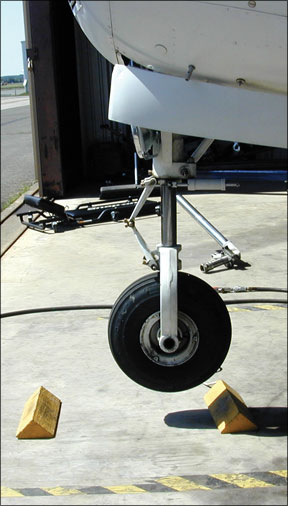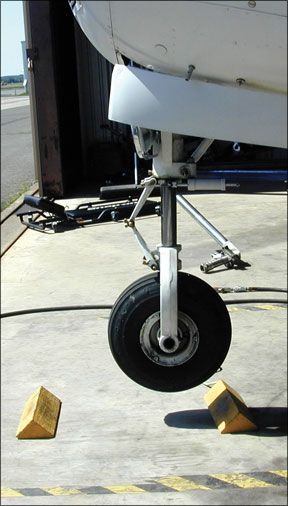It certainly wont come as a surprise to an owner to see someone write that aircraft maintenance is fraught with surprises. One of mine came on the first flight after an extensive inspect-and-repair-as-necessary effort involving my mid-1960s Bonanza. 288 Since the interior was out of the plane for other work, my IA and I decided to install new gear-motor brushes, which are expensive little beggars, even for a Beechcraft. Soon, we had everything back, buttoned up and were ready for a test flight. As he is fearless, and I wanted the company, my IA came along for the ride from my towered home airport. Engine start, taxi and run-up were normal, as was the takeoff-right up to the point where I tried to raise the gear. It started coming up fine, but stopped about halfway, with all gear lights extinguished and the mechanical nosegear indicator showing the worst-case: The gear was hung, about half-retracted and half-extended. By this time, my IA was starting to ask deep, penetrating questions. Like, “What are we going to do?” “Were going to depart the pattern and find a quiet spot away from the traffic, then dig out the POH and youre going to read me the emergency gear-extension checklist.” Which is what we did. In the Bonanza, emergency gear extension mainly consists of turning a smallish handcrank behind the seats some 50 times. It didnt take that many to get our green light and down nosegear indication, whereupon we returned to make a normal, if gentle, landing. Although we had followed every procedure in the maintenance manual regarding the gear motor, nowhere does it mention the need to “run in” new brushes, something we discovered a few days later. Instead, we sent out the gear motor for overhaul, new brushes and all. Even if you follow maintenance procedures to the letter, theres always something else to trip you up. It pays to have an extra set of hands and eyes in the cockpit when that happens.




